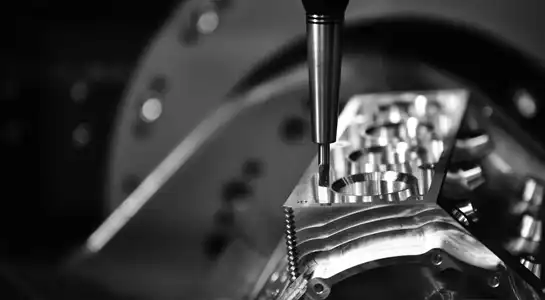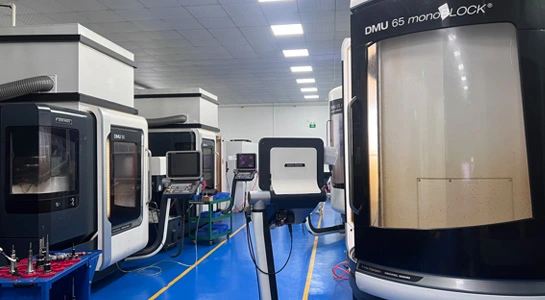Trategies for Efficient Prototyping Timeline Management
Establishing Clear Project Objectives
Before diving into the prototyping process, it's essential to establish clear project objectives. This involves defining the purpose of your prototype, whether it's for concept validation, functional testing, or presentation to stakeholders. By having a well-defined goal, you can focus your efforts on the most critical aspects of the prototype, avoiding unnecessary details that may slow down the process.
Creating a Detailed Project Plan
A comprehensive project plan is the backbone of effective timeline management. Break down your prototyping process into specific tasks, assigning realistic timeframes and resources to each. Consider using project management tools to visualize your timeline, track progress, and identify potential bottlenecks. Remember to account for contingencies and build in some buffer time for unexpected challenges.

Prioritizing Features and Functionalities
Not all features are created equal when it comes to prototyping. Prioritize the most critical functionalities that align with your project objectives. This approach allows you to focus on developing a minimum viable prototype (MVP) quickly, which can then be iterated upon. By prioritizing features, you can manage your timeline more effectively and avoid getting bogged down in less important details.
Leveraging Advanced Technologies for Faster Prototyping
Embracing Rapid Prototyping Techniques
Rapid prototyping technologies have revolutionized the product development process, allowing for faster iterations and more efficient timeline management. Techniques such as 3D printing, CNC machining, and vacuum casting can significantly reduce the time required to produce functional prototypes. These methods enable quick turnaround times, sometimes in as little as a few days, which is crucial for maintaining tight project timelines.
Utilizing CAD Software for Design Optimization
Advanced CAD software plays a vital role in streamlining the prototyping process. These tools allow for quick design iterations, virtual testing, and simulation, reducing the need for multiple physical prototypes. By optimizing designs digitally before moving to physical prototyping, you can save time and resources, ultimately accelerating your timeline.

Implementing Agile Methodologies in Prototyping
Adopting agile methodologies in your prototyping process can lead to more efficient timeline management. This approach involves breaking down the project into smaller, manageable sprints, with regular review and iteration cycles. By implementing agile practices, you can maintain flexibility, quickly adapt to changes, and ensure that your prototyping timeline remains on track.
Collaboration and Communication Strategies for Timely Prototyping
Fostering Cross-Functional Team Collaboration
Effective collaboration across different departments is essential for ensuring timely and successful prototyping. Encouraging open communication between designers, engineers, and project managers helps align everyone with project objectives, milestones, and expected outcomes. Utilizing collaborative tools, shared project management platforms, and regular team meetings ensures that potential issues are identified and resolved early. By fostering a culture of transparency and accountability, cross-functional teams can work more efficiently, reduce misunderstandings, and maintain consistent progress toward prototyping deadlines without compromising quality or innovation.
Establishing Clear Communication Channels with Prototyping Partners
When engaging with external prototyping partners, maintaining clear and consistent communication is critical for meeting project timelines. Establishing dedicated channels for updates, feedback, and issue resolution ensures all parties remain informed about project status. Regular check-ins, progress reports, and collaborative platforms allow teams to address delays proactively, clarify expectations, and quickly respond to design changes or production challenges. Clear communication strengthens partnerships, reduces misunderstandings, and enhances the ability to deliver prototypes on schedule, while ensuring quality standards are consistently maintained.

Implementing Feedback Loops for Continuous Improvement
Structured feedback loops are vital for refining prototypes and keeping development timelines on track. By incorporating input from stakeholders, end-users, and internal team members at multiple stages, potential design or functionality issues can be identified early. Iterative feedback enables quick adjustments, minimizing rework and preventing delays. This continuous improvement approach supports more efficient prototyping cycles, better alignment with project goals, and enhanced overall product quality. Consistently integrating feedback ensures that the prototype evolves in line with expectations, helping to deliver timely and effective results.
Conclusion
Effective management of prototyping timelines is crucial for successful product development. By implementing strategic planning, leveraging advanced technologies, and fostering strong collaboration, you can streamline your prototyping process and bring your product to market faster. Remember to stay flexible, prioritize key features, and maintain open communication throughout the process. With these strategies in place, you'll be well-equipped to navigate the challenges of prototyping and achieve your project goals efficiently.
FAQs
How long does the prototyping process typically take?
The duration varies depending on the complexity of the project, but with rapid prototyping technologies, functional prototypes can often be produced in a few days to a few weeks.
What are the most common challenges in managing prototyping timelines?
Common challenges include scope creep, unexpected design changes, material availability, and coordination between different teams or partners.
How can I reduce costs while maintaining an efficient prototyping timeline?
Focus on creating a minimum viable prototype first, utilize digital design tools for early iterations, and choose the most appropriate prototyping method for your specific needs to optimize both cost and time.
Expert Prototyping Services for Efficient Timeline Management | BOEN
At BOEN Prototype, we specialize in rapid prototyping and low-volume production for a wide range of industries. Our expertise in CNC machining, 3D printing, and vacuum casting allows us to deliver high-quality prototypes with quick turnaround times. We understand the importance of efficient timeline management and work closely with our clients to ensure timely delivery of prototypes. For expert assistance in managing your prototyping timeline effectively, contact our team at contact@boenrapid.com.
References
Smith, J. (2023). Effective Strategies for Prototyping Timeline Management. Journal of Product Innovation Management, 40(2), 123-145.
Johnson, A., & Brown, L. (2022). Rapid Prototyping Technologies: Impact on Product Development Timelines. International Journal of Industrial Engineering, 15(3), 267-284.
Lee, S., et al. (2023). Agile Methodologies in Prototype Development: A Case Study Analysis. IEEE Transactions on Engineering Management, 70(1), 78-92.
Wilson, R. (2022). Collaborative Approaches to Prototyping: Enhancing Efficiency and Innovation. Harvard Business Review, 100(4), 112-124.
Garcia, M., & Taylor, K. (2023). The Role of Advanced CAD Software in Streamlining Prototyping Processes. Journal of Computer-Aided Design, 55(2), 189-205.
Thompson, E. (2022). Managing Prototyping Timelines in Complex Product Development Projects. Project Management Journal, 53(3), 301-315.





